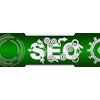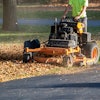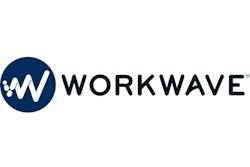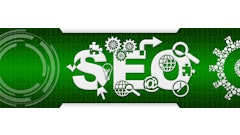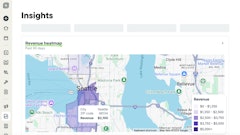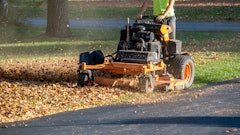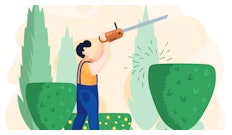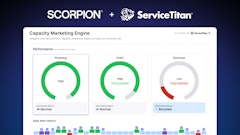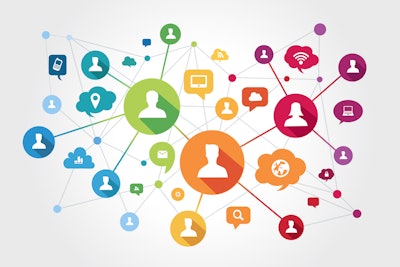
It’s no secret that 80-year-old customers will likely want to communicate with their landscape and lawn care provider differently than customers who are half their age or even a third their age.
“There are five generation of customers and five generations of employees, and that’s a very challenging dynamic,” says Joe Pascaretta, COO of WorkWave. “On the customer side, when you meet the customer where they prefer, you’re going to see much higher engagement than if you just go through a canned approach. As you're trying to win new business, providing that personalized communication experience can really set these companies apart from their competitors, and it also shows how flexible you are with adapting to changing commercial trends around communication.”
Pascaretta and Jana Bradley, customer experience officer at Landscape Management Network (LMN), discuss how green industry companies can increase customer engagement by tailoring their approach to each generation.
Generational preferences
From older generations to younger ones, the primary forms of communication have shifted from traditional communication models involving snail mail and the phone to a digital-first communication model.
Though it may vary depending on the source, for reference, the five generations include the Silent Generation (or Traditionalists) (born 1925-1945), Baby Boomers (born 1946 to 1964), Generation X (born 1965 to 1980), Millennials (born 1981 to 2000) and Generation Z (born 2001 to 2020).
“The younger generations are focused on interacting with the brands, so that's really the Millennials and the Gen Zers,” Pascaretta says. “For those buyers, they’re focused on doing business with organizations that are engaged from a social media perspective and that have video testimonials and items they can look at to make a decision they feel more comfortable with.”
Older Millennials may still prefer email or logging into a client portal versus messaging, while Gen X and Baby Boomers may prefer to cut a check and interact with a human walking the property versus someone using geotracking to size the lot, Pascaretta says.
Bradley adds that Gen X doesn’t mind phone calls, but they’re also comfortable with corresponding through emails, receiving a text notification or paying via a link.
However, there's always (variability) within each of the categories.
“A collaboration of mixed communications is key,” Bradley says. “You still need to have the in-person experience with the customers and team, but you need to make it more efficient. It’s a holistic approach to encompass all the generations.”
Portals of communication
It’s crucial that landscape companies keep up with the preferences of each generation in order to excel at customer service, Bradley says.
“The landscaping world has many moving parts from sales to estimating to the crews on-site, and being able to have complete visibility into a job and what they customers’ expectations are is key,” Bradley says. “Doing so provides exceptional customer service and transparency, confidence and professionalism."
There are several different channels through which customers and companies can communicate:
- Snail mail
- Text message
- Voice call
- Chatbots and chat widgets that use AI
“It's the idea of when it comes to communication meeting the client where they want to engage, whether it's picking up the phone, or having a voice message, texting or sending an email,” Pascaretta says.
There are also several avenues in which lawn care and landscape companies can use current technology to open the door with clients, according to Pascaretta:
- Client portals allow customers to log in, review portfolios and services and interact all the way through payments and invoices. Client portals allow for one centralized place for customers to stay updated on projects and engage with the brand.
- Mobile apps, used on an electronic device, allow customers to view their account and services and request items or report issues. These avenues also allow for Q&A. This brings the way of doing business to a mobile device so customers can make decisions and purchases from anywhere.
- Autonomation around communication includes messaging and reminders of service appointments, as well as friendly information to keep the customer up to date.
Technology trends
Looking ahead, there are several trends on the communication front that could impact how landscape companies win over future customers.
First up is the idea of leveraging technology to get specs on a property without ever setting foot on it.
“It’s utilizing geotracking and satellite technology to give a quote in real time so you can get that quote into the hands of the client as soon as possible,” Pascaretta says. “That’s an impactful marketing campaign because you eliminate (several) steps.”
Another aspect of technology that’s emerging is the ability to show customers the finished product before the design even begins, for example, with hardscape projects.
“Immersing yourself in an AR device and actually looking around and seeing what you’re going to get, that’s winning over the customer and that’s taking the experience to a whole new level,” Pascaretta says.
Customers will also want transparency as to how the service is going, Bradley says.
“I think there's going to be a lot more use of customer portals where they can go in and view before and after pictures, see their invoices, see how their job is progressing and approve changes on the fly,” Bradley says.
The other big trend is that younger generations tend to care more about eco-friendly solutions.
“Whether it’s the materials or the tools and equipment, you’re starting to see an increasing interest from companies with commercial properties where (environmentally friendly solutions) are becoming something of a check mark,” Pascaretta says. “When this became a huge trend with the movement of environmental, social and governance initiatives, it was more Fortune 500 and Fortune 1000 adopting it, but we’re starting to see it enter the world of field service.”

